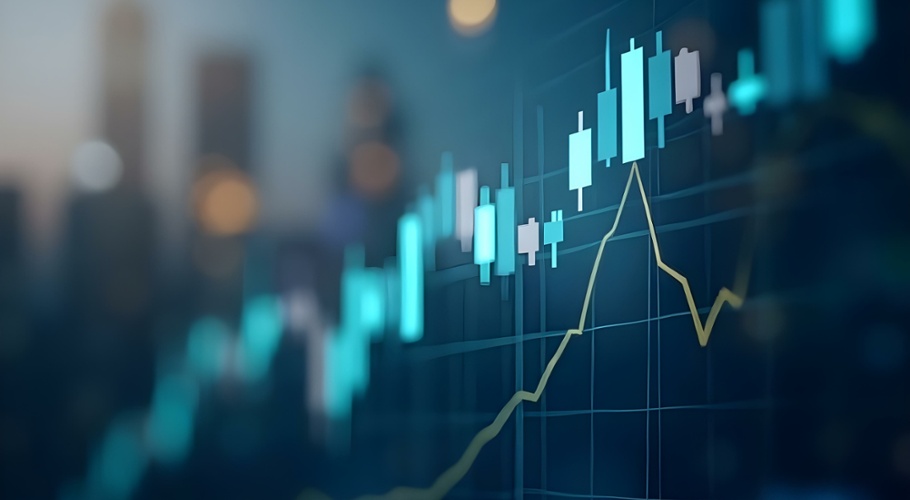Passive defensives set to shine as uncertainty clouds outlook
Inflation is currently running at multi-decade highs, and the Reserve Bank of Australia (RBA) has indicated it aims to quickly bring the problem under control. Fortunately for the growing band of investors in exchange-traded funds (ETFs), there are a number of ways to shelter capital from a potential incoming storm.
Loading up on more equity exposure may not be the natural response to market turmoil, but in the current environment, where cash rates are still incredibly low and ETF products have become highly specialised, this time around, ETFs that group together traditionally defensive assets like consumer staples or fixed income securities abound.
In terms of the best performing ETFs for the first half of the year, perhaps not surprisingly when the S&P 500 was down nearly 20% and the ASX 200 by over 10%, there were those geared to short equity exposures. This included the BetaShares US Equities Strong Bear Hedge Fund (ASX: BBUS), which returned 55% for the half.
Next best performers were those with exposures to rapidly rising oil prices, with Crude Oil (ASX: OOO) and Global Energy Companies (ASX: FUEL) ETFs returning 52% and 22%, respectively.
Value in Long term plays
However, the growing range of ETF products in the market means that some options may not currently stand out as clearly, but still offer good long-term value.
One play favoured by analysts, is companies in the non-discretionary consumer goods or consumer staples sector. In other words, sectors where people will keep buying the products even as money becomes tight.
Food, drinks, household essentials, and alcohol are produced by consumer staple companies, and they feature in the iShares Global Consumer Staples ETF (ASX: IXI).
According to iShares, this ETF is exclusively focused on providing "exposure to companies that produce essential products, including food, tobacco, and household items." However, at the start of July this index was still down 4.69%, albeit the broader Vanguard Australian Shares index (ASX: VAS) was down 12.7%.
Structural change set to outlast slowdown
Backing ETFs focused on big emerging structural shifts in the economy is another way to ride out an economic slowdown that many fear could become a recession. One of these is healthcare. People will always need it, technology is steadily transforming it, and an ageing population ensures growing demand for it for years to come.
With names like DRUG, CURE and, more obscurely, IXJ, these ETFs from the major providers track diversified portfolios of the world's leading healthcare companies in a single ASX trade for a low fee. Again, these ETFs were down at the start of July, but falls were far less sizeable compared with a bigger falloff in the overall market.
Quality stocks to shine
Going for exposure to more high quality companies is another favoured play (as we covered in our recent article on AXIS). These are firms with strong balance sheets, low debt, and good cash flow. These types of companies have historically tended to withstand economic recession.
Quality companies at this point of the cycle are an interesting play for investors," said Blair Modica, Director, Adviser Business, at ETF provider BetaShares.
BetaShares offers exposure to quality companies through its BetaShares Global Quality Leaders ETF (ASX: QLTY) or the BetaShares Australian Quality ETF (ASX: AQLT). Although year to date neither fund has been totally immune to the equity market selloff.
Fixed income may see new dawn
Given the return of inflation and the RBA’s move to raise interest rates, fixed income should begin to look attractive for many investors again. Fixed income serves as a safety net in portfolios. When equities are sold down, fixed income generally is a way for investors to minimise their losses.
Global fund giant BlackRock has said that it has already seen signs that investor interest in fixed income has begun to pick up, especially from big institutional investors.
"We expect bond industry ETF assets will nearly triple and reach US$5 trillion at the end of the decade...rising rates will bring a whole new set of investors," founder and CEO Larry Fink recently told analysts on an earnings call.
Over the past six months, the bond market has priced in aggressive rate hikes that many commentators believe central banks will struggle to meet; in this scenario, fixed income looks attractive as part of a well-constructed portfolio.
Here, investors can use the BetaShares Australian Government Bond ETF (ASX: AGVT) or the BetaShares Australian Composite Bond ETF (ASX: OZBD) to gain exposure to this trade. However, to date, these indexes have fallen almost as much as the broader equity market.
According to AUSIEX data for the year to 30 June 2022, there was little sign of any pickup in the trading of Fixed income ETF strategies either. The data shows Australian Fixed Income strategies were the fifth most actively traded ETF category, ahead of property ETFs, but the volume of trading had been steady all year.
Then there is always the traditional safe haven in times of uncertainty, gold. To date, gold-themed ETFs have proved of some value, with the Physical Gold ETF (ASX: GOLD) posting a return of 5.3% in the first half of the year.
Whether seeking safety in traditional safe havens or searching for longer-term themes that will ride out the current volatility, investors have plenty of options in the ETF market to protect their portfolios.

